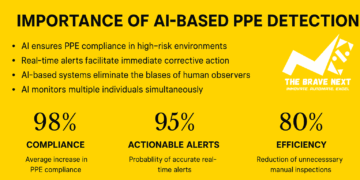Introduction: What Is Substantive Editing?
When you’re writing something important—like an academic paper, a business proposal, or a technical report—basic grammar checks just aren’t enough. Sure, spell check can catch typos, but it won’t help if your ideas don’t flow well or your message isn’t coming across clearly. That’s where substantive editing steps in.
Substantive editing, sometimes called content or structural editing, takes a deep dive into your document. It focuses on how your ideas are organized, how clearly they’re expressed, and whether the tone fits your audience. It’s especially helpful for complex documents where clarity and structure are key.
If you’re aiming to make a strong impression or want your work to be accepted, published, or taken seriously, substantive editing is a must.
Why Light Editing Doesn’t Go Far Enough
It’s easy to think a quick proofread is all your work needs. But while proofreading and light editing can catch surface errors, they don’t address bigger issues like unclear arguments or poor structure. Here’s a quick breakdown:
| Type of Editing | What It Covers |
| Proofreading | Spelling, punctuation, small mistakes |
| Copyediting | Grammar, sentence structure, word consistency |
| Substantive Editing | Overall flow, organization, clarity, tone |
Imagine a paper that’s grammatically perfect but still hard to understand. Substantive editing helps fix that. It reshapes your content so your main ideas come through clearly and logically.
What Substantive Editing Can Do for You
1. Creates Stronger Structure
A well-edited document has a clear beginning, middle, and end. Substantive editors can rearrange sections, suggest better headings, or help refine your thesis or conclusion. The result is a smoother experience for your readers.
2. Clarifies Your Ideas
Editors look for spots where your message gets lost—maybe a sentence is too long or a section feels vague. They simplify the language, fix awkward transitions, and cut down on repetition to make your ideas easier to follow.
3. Keeps the Tone Consistent
Your tone should match your purpose and audience. Whether your writing is formal, persuasive, or conversational, substantive editing makes sure it stays consistent throughout.
4. Strengthens Your Argument
If you’re writing something analytical or persuasive, your claims need to be clear and well-supported. A substantive editor will check if your evidence makes sense, if your reasoning holds up, and if you’ve addressed any counterpoints.
5. Helps Keep Readers Engaged
Well-structured and clearly written content is easier to read—and more likely to hold attention. Substantive editing ensures that readers can understand and connect with your message from start to finish.
Who Can Benefit from Substantive Editing?
Substantive editing isn’t just for academics. It’s useful for anyone creating content that needs to be clear, professional, and impactful:
- Students and researchers working on theses, dissertations, or journal submissions
- Authors preparing fiction or non-fiction manuscripts
- Professionals writing proposals, reports, or white papers
- Marketers and content creators producing blog posts or case studies
- Technical writers creating manuals or guides
If your writing will be evaluated for quality or clarity, substantive editing can make a major difference.
Substantive Editing vs Developmental Editing
These two types of editing are often confused. While they’re related, they focus on different stages of writing.
- Developmental editing looks at early drafts. It focuses on shaping the big picture—things like your main idea, narrative structure, or engagement.
- Substantive editing comes in later. It refines the existing content, improves flow, and polishes your arguments.
Think of it like building a house. Developmental editing is the blueprint. Substantive editing is the finishing work that makes everything come together.
Do You Need Substantive Editing?
Here are some signs your document could benefit from it:
- You’re not sure if your ideas connect clearly from beginning to end
- You’ve rewritten the draft several times and need a fresh set of eyes
- You’re preparing to submit to a journal, publisher, or client
- Some parts confuse your peers or colleagues
- English isn’t your first language and you want the writing to sound native
If any of these apply to you, now’s the time to get it edited—before rejection or confusion sets in.
Why a Professional Editor Makes a Difference
Substantive editing works best when it’s done by someone with experience in both language and your subject. A good editor doesn’t change your voice. Instead, they help you say what you really mean in the clearest way possible.
That’s why professional editing is more than just a polish—it’s an investment in the impact of your work.
Why It’s Even More Important Today
In today’s digital world, people often meet your work before they meet you. Whether you’re sharing an article, submitting an application, or publishing research, your writing speaks first.
Readers—and search engines—prefer writing that’s clear, structured, and easy to understand. Substantive editing can improve how your content performs online and how it’s received by real people.
Final Thoughts
Substantive editing isn’t just a nice extra. It’s essential if you want your work to be taken seriously. Whether you’re trying to inform, persuade, or publish, the success of your writing depends on how clearly and effectively you communicate.
Before you hit send or publish, take a moment to ask: could a deeper edit make this better? If the answer is yes, then a substantive edit might be the best next step.


















